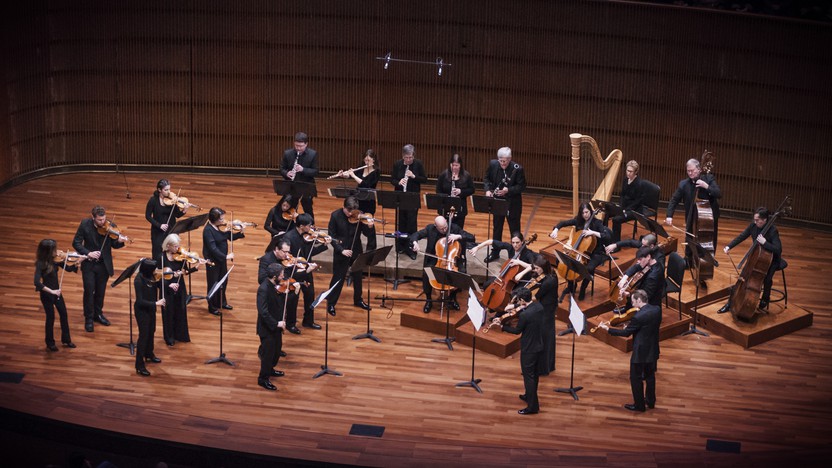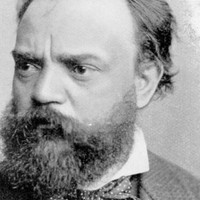Dvořák’s Serenade for Winds


As a disciple of Rimsky-Korsakov, the Russian composer Anatol Liadov might have rivaled his teacher in composing wondrous orchestral music if his notoriously poor work ethic hadn’t slowed him down. (Liadov is perhaps most famous for the gig he missed out on; he was supposed to compose The Firebird, but when he faltered the young Stravinsky got his big break.) One avenue that suited Liadov very well was adapting existing material, as in the Eight Russian Folksongs that he arranged for orchestra in 1906, reduced here into a transcription for wind quintet. His well formed ideas of harmony, counterpoint and timbre enrich these folk materials into attractive art music, from a time when Russian composers were eager to clarify the national identity that set them apart from mainstream European music.
Anatol Liadov ©1906
Until the age of 12, Martinů lived in a small apartment atop a Bohemian church tower, where his father was responsible for ringing the bells. He never shed that isolated, wide-angle perspective he developed in his youth, neither during his brief time as a student at the Prague Conservatory nor in his decades of exile in France, the United States, Italy and Switzerland.
Martinů moved to Paris in 1923 to study with Albert Roussel, who exposed the Bohemian expatriate to France’s music du jour: the bright and sharpedged neoclassicism of Stravinsky and the younger “Les Six” composers, including Milhaud and Poulenc. Those influences never lost their hold on Martinů, as can be heard in one of his last compositions, the Nonet from 1959.
Not to be confused with Martinů’s incomplete Nonet from 1925 that included piano, this late Nonet celebrated the 35th anniversary of the Czech Nonet, an ensemble of flute, oboe, clarinet, bassoon, horn, violin, viola, cello and bass. Martinů’s approach treats the instruments like nine soloists in a collective concerto, not unlike Stravinsky’s “Dumbarton Oaks” Concerto and other works for small orchestra that reinvigorated Classical and Baroque procedures. Fans of Martinů’s vast orchestral catalog will recognize his unmistakable voice in this work that manages to sound unusually full with its nine-piece ensemble, building those spacious chords and motoric rhythms that characterize his expansive adaptation of neoclassical style.
Bohuslav Martinů ©1959
Through his own compositions and his long career teaching at the Budapest Academy of Music, Ferenc Farkas played a vital role in the musical life of his native Hungary in the middle of the twentieth century. The years he spent studying in Rome with Respighi helped Farkas infuse bright instrumental colors and reverence for historical forms into his musical language, qualities that shine through in the Serenade he wrote for the Budapest Wind Quintet in 1951. After a tidy first movement in the Classical era’s standard sonata form, and then a songlike slow movement tinged with Hungarian modes, the brisk finale takes its bouncing rhythm from an old Italian folk dance, the saltarello.
Ferenc Farkas ©1951
 Watch Video
Watch Video
Czech composer Antonín Dvořák’s Serenade for Winds has remained popular since its 1878 premiere, which was conducted by the composer himself in Prague. Dvořák dedicated the piece to Louis Ehlert, a music critic whose praise for Dvořák’s earlier works had made the composer famous throughout Germany. Like many of Dvořák’s compositions, the Serenade blends sonic elements of classical music with Eastern European folk traditions.
The Serenade opens with a movement that hearkens back to the soundscapes of long-ago court performances from the Rococo period; the sounds of the aristocracy are merged with a song of the common people. This opening theme is particularly important, because it will return near the end of the final movement, thereby making the Serenade a cyclical work. The second movement begins with a wistful, charming minuet. This is followed by a lively trio with syncopated Czech dance rhythms.
Long, sensuous melodies in the slower third movement convey a sense of melancholic nostalgia. The expressive oboe and clarinet are accompanied by subtle syncopation in the horn section and an active bass line. The Serenade ends with a driving, witty Finale reminiscent of the village band. High-level performance on wind instruments was a centuries-long Bohemian tradition, and Dvořák’s Serenade pays tribute to that rich heritage.
The year after the Serenade’s premiere, Johannes Brahms sent a letter to Joseph Joachim praising the work. Brahms wrote: “A more lovely, refreshing impression of real, rich and charming creative talent you can’t easily have…I think it must be a pleasure for the wind players!”
Paula Maust ©2022
Get driving directions and find nearby parking.
Find dining options close to the venue.
View seating charts to find out where you'll be seating.
Get driving directions and find nearby parking.
Find dining options close to the venue.
View seating charts to find out where you'll be seating.
